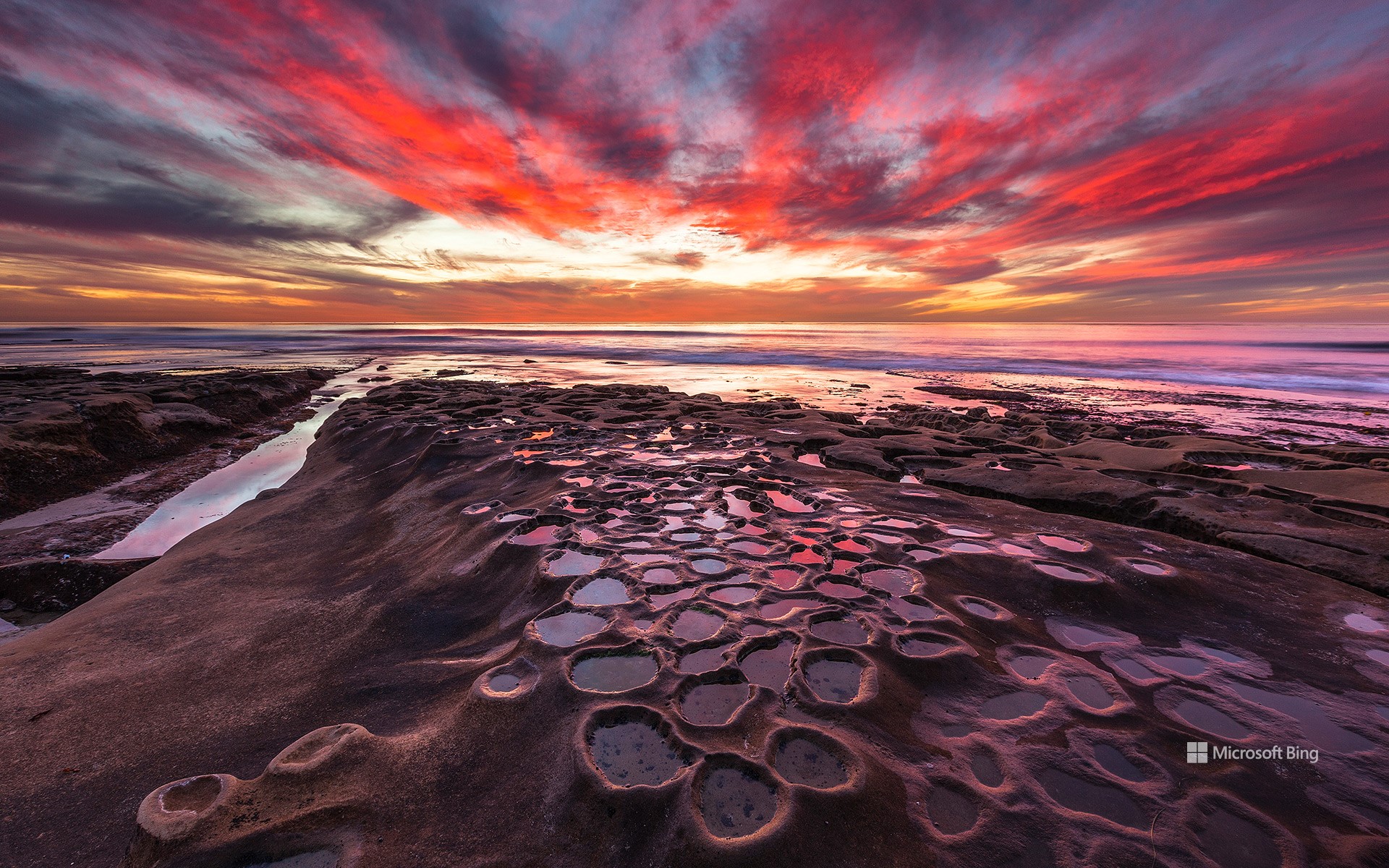拉霍亚的潮汐池, 加利福尼亚州, 美国 Tide pools in La Jolla, California (© Andrew Shoemaker/DanitaDelimont.com)

拉霍亚的潮汐池, 加利福尼亚州, 美国 Tide pools in La Jolla, California (© Andrew Shoemaker/DanitaDelimont.com)
潮起潮落 Tide and seek
拉霍亚的潮汐池, 加利福尼亚州
并非每堂科学课都需要在教室里进行。在加利福尼亚州的拉霍亚,退潮后形成的潮池就在你脚下,向你揭示海洋的奥秘。在圣地亚哥这个沿海社区的岩石海岸线上,当潮水退去,海水被困在天然的凹坑中,就形成了潮池。这些浅水池自然分布在拉霍亚的砂岩和礁石之间,尤以风之海海滩、贝壳海滩、南卡萨海滩和医院角附近最为典型。海水停留在这些岩石凹槽中,为海兔、脆皮海星等多样的海洋生物提供了独特的栖息地。潮池的形成要归功于长期的侵蚀作用。海浪日复一日拍击砂岩和石灰岩的海岸,逐渐雕刻出能够蓄水的小坑洼。每天两次,随着潮水的涨落,这些潮池不断被海水淹没又重新显露,内部的生物也因此必须适应极为多变的环境。冬季白天潮水最低,是探索潮池的最佳时机。需要注意的是,这些潮池受到加州《海洋生物保护法》的保护。你可以欣赏这里的美景、观察潮池中的居民并拍照留念,但请不要触碰或打扰其中的任何生物。这是一堂免费的海洋生物课程,正在你眼前生动上演。
Tide pools in La Jolla, California
Not every science lesson requires a classroom. In La Jolla, California, tide pools teach you about ocean life—right at your feet. Along the rocky shoreline of this San Diego coastal neighborhood, tide pools form during low tide as seawater gets trapped in natural depressions. These shallow pools form naturally along La Jolla's rocky shorelines, especially near Windansea Beach, Shell Beach, South Casa Beach, and Hospital Point. The water that remains trapped in sandstone and reef depressions creates habitats for everything from sea hares to brittle stars. Over time, the tide pools are created through the process of erosion—waves hit the sandstone and limestone coastlines until they carve out pockets that hold water. Twice a day, as the tide moves in and out, these spaces flood and drain, challenging the survival skills of everything inside. Winter months, when tides are lowest during daylight hours, are ideal for observing them.
评论已关闭